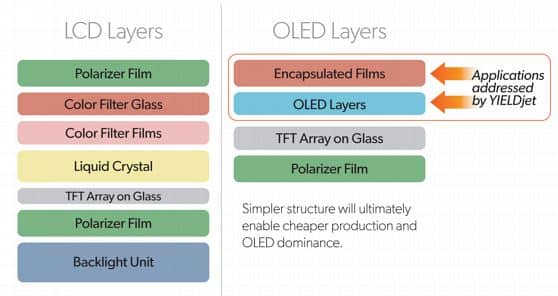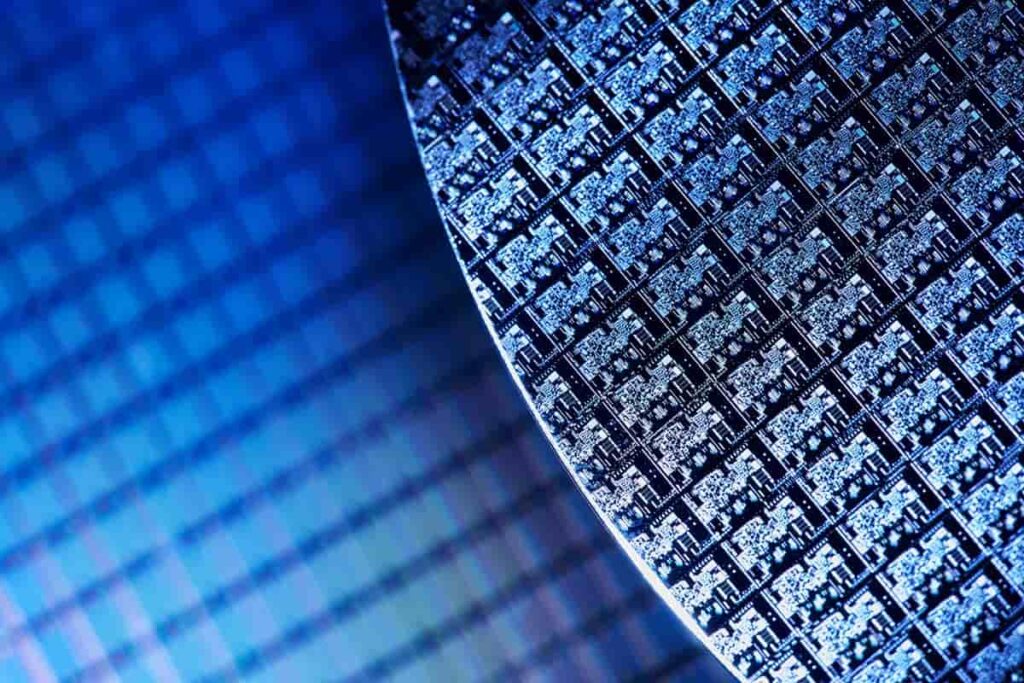Kateeva uses Inkjet Printing for OLEDs
Table of contents
Table of contents

Organic light-emitting diodes (OLEDs) provide a superior display technology to traditional liquid crystal displays (LCDs). If you have a Samsung or Motorola smartphone, it most likely has an OLED display. Significant advantages of OLEDs include truer color, better contrast ratio, and lower power—on a thinner and more flexible screen. However OLED adoption is limited by high production costs and the biggest technical problem; the limited lifetime of the organic materials used in the production process. OLEDs can be printed onto any suitable surface by an inkjet printer or even by screen printing theoretically making them cheaper to produce than LCD or plasma. One company that is looking to use inkjet printing to make the production of OLEDs economically viable is Kateeva.
About Kateeva
Founded in 2008, Silicon Valley-based Kateeva is backed by $75 million in venture capital so far from the likes of Applied Materials, Madrone Capital Partners, DBL Investors, and Musea Ventures. The Company is the inspiration of five MIT researchers who came together to turn a revolutionary invention into a revolutionary business. The Chief Technology Officer of Kateeva is OLED co-inventor, Steven Van Slyke, a leading authority on OLED technology who holds more than 35 patents in the areas of OLED materials and device architecture.
YIELDjet
YIELDjet is claimed to be the world’s first inkjet printer engineered from the ground up for OLED mass production and doubles lifetime in certain applications by enclosing the tool in a pure nitrogen chamber. While particle contamination is a guaranteed yield killer, the YIELDjet process has a 10X reduction in particles when compared to commonly used OLED production techniques. Where an LCD screen requires seven distinct device components, an OLED screen has only four.
Kateeva expects YIELDjet to produce OLEDs at a cost 30 percent less than that of LCD manufacturing when the product is used in mass production.
Conclusion
Kateeva’s YIELDjet production equipment targets some large markets. With 55” OLED TVs debuting this year, Touch Display Research predicts that by 2020 this market will reach $15.5 billion. IHS Inc. predicts global market revenue for flexible OLEDs to soar from $21.9 million in 2013 to $94.8 million in 2014 and by 2020 rise to well above $5.5 billion. While YIELDjet seems to be operating in stealth mode based on the few news items they have released to date, any news of YIELDjet adoption by major electronics manufacturers could signal that YIELDjet is ready for prime time.
Sign up to our newsletter to get more of our great research delivered straight to your inbox!
Nanalyze Weekly includes useful insights written by our team of underpaid MBAs, research on new disruptive technology stocks flying under the radar, and summaries of our recent research. Always 100% free.















